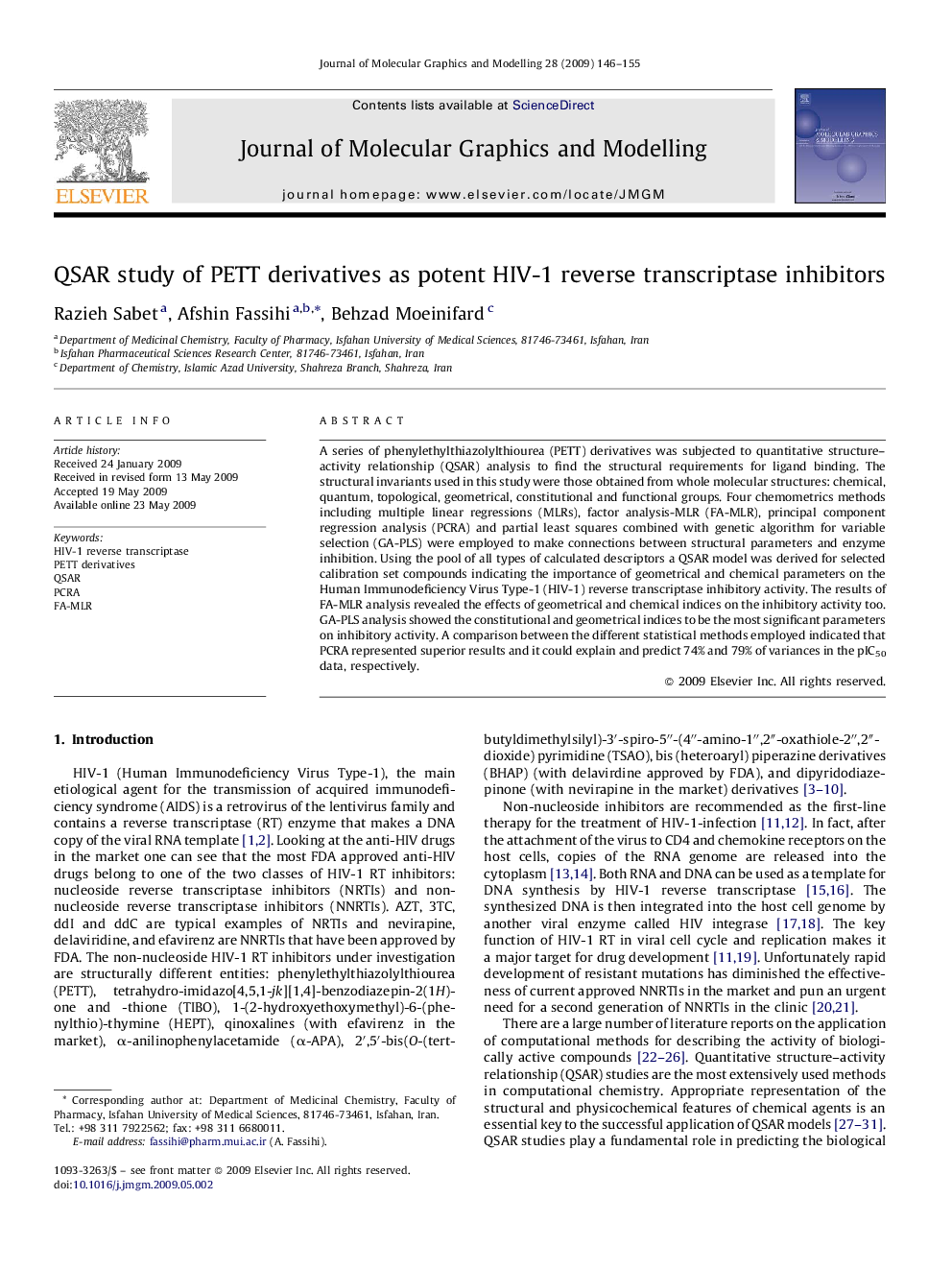| Article ID | Journal | Published Year | Pages | File Type |
|---|---|---|---|---|
| 443602 | Journal of Molecular Graphics and Modelling | 2009 | 10 Pages |
A series of phenylethylthiazolylthiourea (PETT) derivatives was subjected to quantitative structure–activity relationship (QSAR) analysis to find the structural requirements for ligand binding. The structural invariants used in this study were those obtained from whole molecular structures: chemical, quantum, topological, geometrical, constitutional and functional groups. Four chemometrics methods including multiple linear regressions (MLRs), factor analysis-MLR (FA-MLR), principal component regression analysis (PCRA) and partial least squares combined with genetic algorithm for variable selection (GA-PLS) were employed to make connections between structural parameters and enzyme inhibition. Using the pool of all types of calculated descriptors a QSAR model was derived for selected calibration set compounds indicating the importance of geometrical and chemical parameters on the Human Immunodeficiency Virus Type-1 (HIV-1) reverse transcriptase inhibitory activity. The results of FA-MLR analysis revealed the effects of geometrical and chemical indices on the inhibitory activity too. GA-PLS analysis showed the constitutional and geometrical indices to be the most significant parameters on inhibitory activity. A comparison between the different statistical methods employed indicated that PCRA represented superior results and it could explain and predict 74% and 79% of variances in the pIC50 data, respectively.
